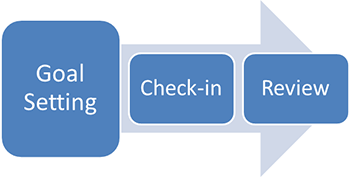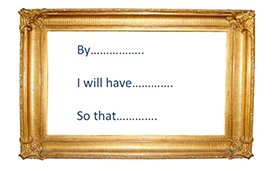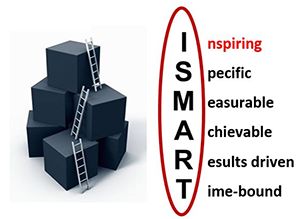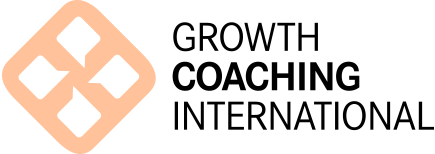Performance Development Goal Setting
Would you like to make a solid start to the new school year with supporting your staff to work towards their goals?
In relation to Performance and Development Planning in schools, AITSL suggests a process of annual review and goal setting as a key component of an effective performance and development framework.
How can a coaching approach breathe life into this process, and help educators gain clarity in their learning goals? Since goals are central to coaching, there is a good fit. This article sets out some simple ideas to get this started.
Goal setting
Goal setting is part of the cycle of learning and reflection – goals can be fluid and be reshaped, or more structured and long term.
Many schools find it useful for teachers to set 3 goals:
- One goal related to an initiative from the school’s annual improvement plan, e.g. literacy
- One goal related to a department or stage initiative, e.g. implementation of a new topic or strategy
- One goal related to their own teaching, e.g. a challenging class, an IT tool, a pedagogical approach such as differentiating learning
The number of goals set and the way these are documented is far less important than what the goals mean to the teacher. It is important that teachers are given the opportunity to shape goals that are compelling and even inspiring to them in their context. More on this later.
An overall plan – time frame for conversations and what might be achieved

Meeting One: (30 minutes)
Goal Setting – Here it may be useful to identify a goal which is, by comparison to others, harder to identify or define, and would benefit from thoughtful guided reflection (commonly known as ‘two heads on the problem’!).
Devise one or two actions (an effective coaching conversation should always result in action!).
Meeting Two – 3-4 weeks later (10-15 mins)
Check-in – This phase is about maintaining momentum. How are you progressing? What plans do you have for your other goals this year? What else needs to be put in place?
In some cases, there may be limited progress on the goal. So where do we take the conversation here? Going back to the beginning with something like ‘I see…so as you look back over the last three or four weeks, do you think the goal just wasn’t working for you, or the steps you identified to work towards it weren’t the right steps?’. At this point the conversation can return to refining the goal/options so they are more compelling.
Meeting Three - end of term one – (10-15 mins)
Review - What has happened since we last met? What support can I give you in term 2? What are your next steps?
This phase also provides a great opportunity for affirming strengths and celebrating successes.
Getting the most out of the first meeting
Your preparation
There are some important considerations here, to avoid the meeting becoming just one more ‘top-down’ compliance activity without any real meaning or ownership. This goal is not for your clarity and control – it has to be authentic, timely and really matter to the teacher.
Establish a collegial, trusting environment – see here for some clues, paying particular attention to the R for Rank, as status and an imbalance of power may play into this conversation.
Keep goals smaller and achievable – but with a ‘stretch’: requiring some effort to attain.
This is a time for great listening.
Positively reinforce as much as you can, and as authentically as you can.
Together, set a minimal action plan that is do-able and can be started on, perhaps with some small steps, immediately.
In the meeting
By way of introduction, describe the purpose of the meeting: to work together to form useful performance and development goals, and determine how they can best be supported. Point out that in this meeting there is time to work on one goal, perhaps the one that is more complex, or more elusive, or harder to narrow down.
Then guide the process, perhaps using some of these types of questions:
Scanning
- What’s the most useful goal area for us to be focusing on today?
- Tell me, as succinctly as possible, what would you like to be different in your teaching this year?
- What exactly would you like to achieve in relation to this?
Getting more detail
On the desired state (this is important for clarity and also to know when the goal is achieved)
- What would be the result of that? How would things be better for you? For the teachers you supervise (if relevant) or for your students?
- If this were in place, what would your students notice about your lessons? What would you notice? Who else would notice something different? What would they notice?
- What would be different by say, then end of term one? By the end of the year?
Setting up the goal statement
Let’s get that written down (the preferred structure is By…...(time frame), I have….(goal stated as an outcome), so that…(overall desired result).

Hint: Keep the acronym ISMART in mind.

The intention of ISMART is not to dumb down the goal, but to help get it well tuned and useful.
Then some actions – what will you do? What are your intentions here?
What learning might you have to do to accomplish this?
Is there anything you have to stop doing, in order to achieve this goal?
Closing the meeting
What’s one thing you can do in the next 2 days that will take you one step closer to your goal?
Positively reinforce the progress made.
Ask how useful the process was for the other person, perhaps on a scale of 1-10. What’s one thing that could have made it more useful?
Give feedback to the person on what you noticed about them, during the meeting, that will be helpful to them in achieving their goals
To think about:
What are your expectations regarding performance and development goals for your staff? How clearly have you articulated this to them?
Would a brief handout preparing people for the series of meetings be useful? What would this include?
How could you evaluate this process as you go along?

